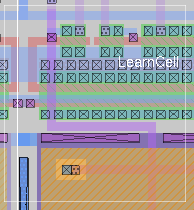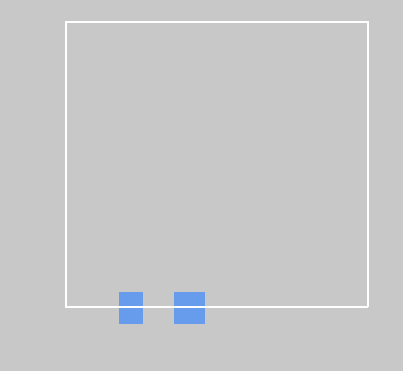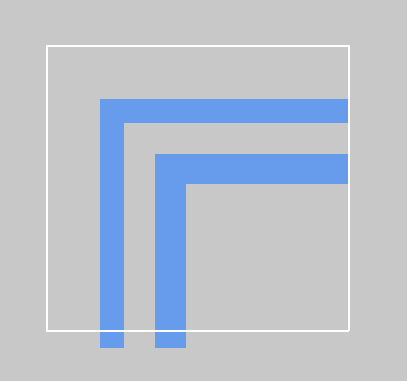



corner d1 d2 [layers]
where d1 and d2 are valid manhattan directions, and layers is an optional comma-separated list of valid paint layers.
The corner command makes L-shaped wires inside the cursor box, filling first in direction d1, then in direction d2. If no layers are specified, then the cornering algorithm is applied to all layers crossing the cursor box boundary opposite to direction d1. If layers is specified, the cornering algorithm is applied only to those layers specified. The usage of corner is similar to that for the command fill (q.v.).
Below is an example showing how the cornering algorithm responds to the command corner n e. First it finds layers crossing the cursor box boundary to the south (opposite to the first specified direction, north), and then extends these layers as wires first to the north, then to the east. The position of the layers leaving the box to the east is such that the same distance is maintained from each layer to the north side of the box at the exit point as it was from each layer to the east side of the box at the entrance point.

Figure 1: The cornering operation in response to the layout shown, given magic command corner n e.
corner is implemented as a built-in magic command.
If the area in the box is not large enough for the cornering algorithm to produce the cornered wires, unpredictable results often result.
direction
fill

| Return to command index |
Last updated: March 7, 2020 at 1:06pm